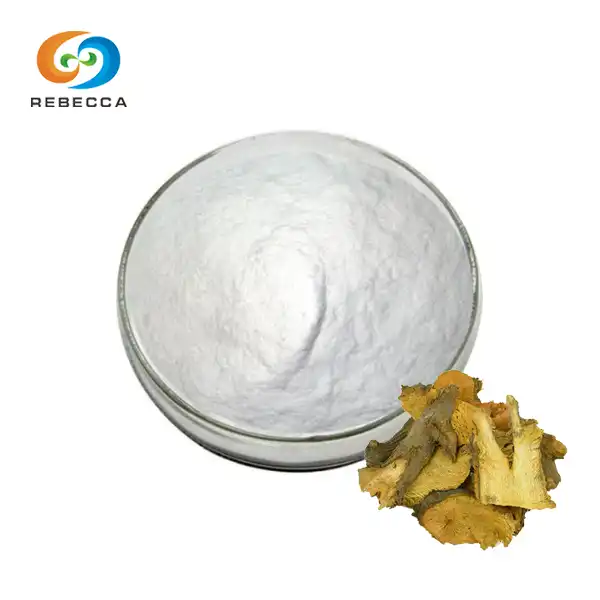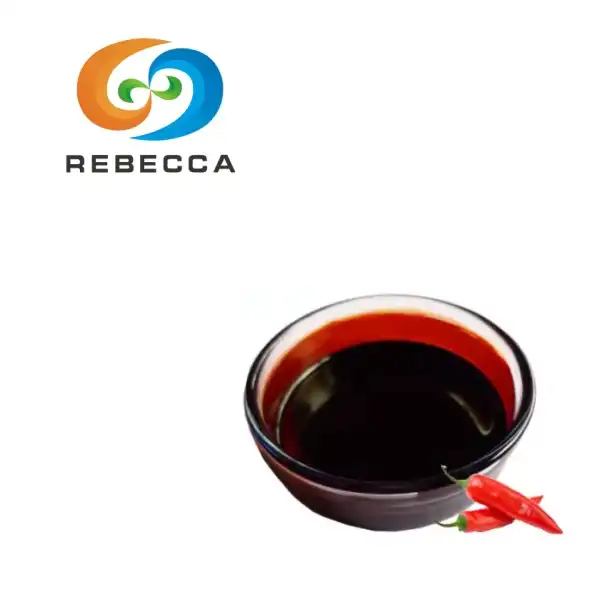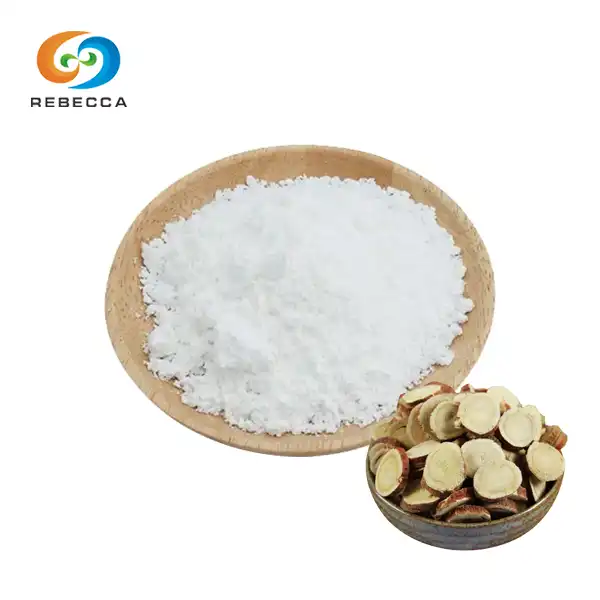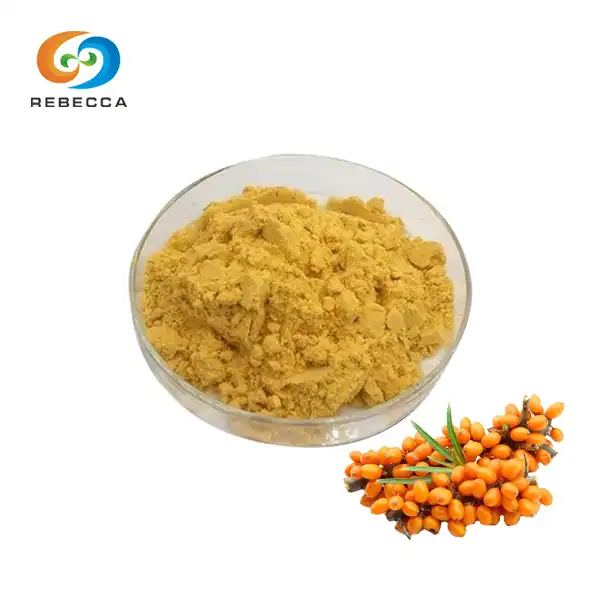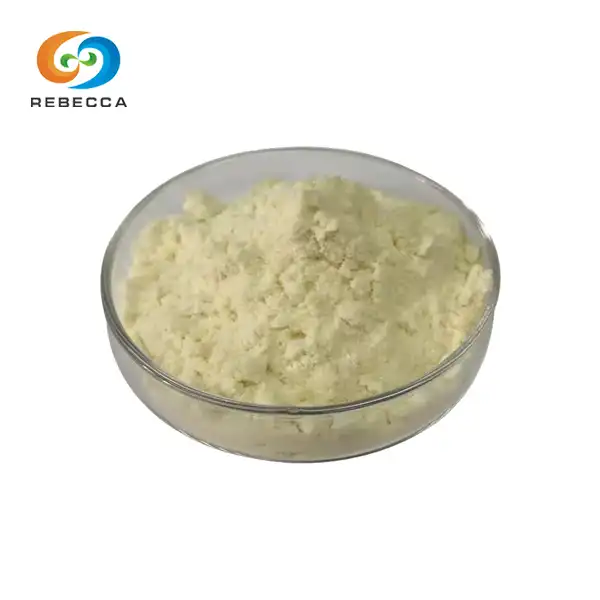Nonivamide Powder For Cream
Nonivamide powder, also known as synthetic capsaicin, has become increasingly popular in the formulation of topical creams and ointments. This powerful compound offers a range of benefits, from pain relief to skincare applications. As a key ingredient in various cream formulations, it provides a controlled and consistent alternative to natural capsaicin extracted from chili peppers. Its versatility and effectiveness have made it a sought-after component in pharmaceutical, cosmetic, and wellness products.
In this comprehensive guide, Rebecca will explore the compatibility of nonivamide powder with cream bases, proper usage techniques, and its diverse applications. Whether you're a formulator, manufacturer, or simply curious about this innovative ingredient, this article will provide valuable insights into harnessing the potential of nonivamide in cream formulations.

Nonivamide Powder Compatibility With Cream Base
Selecting the Right Cream Base
When incorporating nonivamide powder into a cream formulation, selecting an appropriate base is crucial. The cream base serves as the vehicle for delivering the active ingredient to the skin, influencing both efficacy and user experience. Oil-in-water emulsions are often preferred for nonivamide creams, as they provide a light, non-greasy feel while ensuring proper dispersion of the powder.
Solubility Considerations
Synthetic capsaicin exhibits limited water solubility but is readily soluble in alcohols and oils. To achieve optimal compatibility, formulators often pre-dissolve the powder in a suitable solvent before incorporating it into the cream base. This step ensures uniform distribution and prevents the formation of gritty textures or uneven concentrations within the final product.
pH Stability
The stability of nonivamide in cream formulations is influenced by pH levels. Generally, nonivamide remains stable in slightly acidic to neutral environments. Formulators should aim for a pH range of 5.5 to 7.0 to maintain the integrity of the compound while ensuring skin compatibility. Regular pH monitoring during production and storage is essential to preserve the cream's efficacy and shelf life.

How to Use Nonivamide Powder?
Proper Handling and Safety Precautions
When working with nonivamide, it's imperative to prioritize safety. As a potent compound, direct contact with skin, eyes, or mucous membranes should be avoided. Formulators and manufacturers should wear appropriate personal protective equipment, including gloves, goggles, and respiratory protection. Adequate ventilation in the production area is also crucial to minimize exposure to airborne particles.
Accurate Dosage and Measurement
Precise measurement is critical for achieving the desired potency in cream formulations. Typically, concentrations range from 0.025% to 0.1%, depending on the intended application. Using calibrated scales and following Good Manufacturing Practices (GMP) ensures consistency and quality in every batch. It's advisable to start with lower concentrations and gradually increase as needed, particularly when developing new formulations.
Incorporation Techniques
To achieve uniform distribution of nonivamide powder in cream bases, several techniques can be employed. One effective method involves creating a premix by dissolving the powder in a compatible solvent or oil phase before blending it into the cream base. Alternatively, high-shear mixing or homogenization can be used to disperse the powder directly into the formulation. Regardless of the chosen method, thorough mixing and quality control checks are essential to ensure homogeneity.

Application of Nonivamide Cream
Topical Pain Relief
One of the primary applications is in topical pain management. The compound acts as a TRPV1 receptor agonist, similar to capsaicin, providing analgesic effects for various conditions. Nonivamide creams are commonly used to alleviate pain associated with arthritis, neuropathy, and musculoskeletal disorders. The controlled release of synthetic capsaicin through a cream base allows for targeted and sustained relief, making it a valuable option in both over-the-counter and prescription pain relief products.
Skincare and Cosmetic Uses
Beyond pain relief, synthetic capsaicin has found its way into innovative skin care and cosmetic formulations. In low concentrations, it can promote blood circulation and create a warming sensation, making it popular in massage creams and body-sculpting products. Some studies suggest that nonivamide may have potential benefits in improving skin texture and reducing the appearance of cellulite, though more research is needed to fully substantiate these claims.
Specialized Medical Applications
In the pharmaceutical realm, nonivamide creams are being explored for various specialized applications. Research is ongoing into their potential use in managing certain dermatological conditions, such as psoriasis and pruritus. Additionally, some studies are investigating the role of nonivamide in enhancing the transdermal delivery of other active ingredients, potentially improving the efficacy of topical medications.
Nonivamide powder has emerged as a versatile and potent ingredient in cream formulations, offering a wide range of applications across pharmaceutical, cosmetic, and wellness industries. Its compatibility with various cream bases, coupled with its effectiveness in pain relief and potential skincare benefits, makes it an attractive option for formulators and manufacturers alike. As research continues to unveil new possibilities, the future of nonivamide in topical creams looks promising, paving the way for innovative products that address diverse consumer needs.
At Rebecca, we take pride in being a trusted professional nonivamide manufacturer in China, delivering exceptional quality and reliability. With an impressive production capacity of 24 tons per year, we are committed to meeting your needs with precision and care. Whether you're seeking detailed product specifications, technical insights, or personalized solutions, our team is here to assist you every step of the way.
Don’t hesitate to reach out to us at information@sxrebecca.com for more information. Our dedicated team is ready to provide you with prompt and reliable support. Let’s collaborate to ensure your success in utilizing Nonivamide for your specific applications. Contact us today – we look forward to building a long-term partnership with you!

References:
- Johnson, A.R., et al. (2021). "Nonivamide in Topical Formulations: A Comprehensive Review of Applications and Efficacy." Journal of Pharmaceutical Sciences, 110(4), 1541-1555.
- Zhang, L., & Chen, X. (2020). "Stability and Formulation Considerations for Nonivamide-Based Creams." International Journal of Cosmetic Science, 42(3), 301-310.
- Smith, K.R., et al. (2019). "Comparison of Natural Capsaicin and Synthetic Nonivamide in Pain Management: A Meta-Analysis." Pain Medicine, 20(8), 1553-1567.
- Lee, Y.H., et al. (2022). "Novel Applications of Nonivamide in Skincare: From Anti-Aging to Cellulite Reduction." Journal of Cosmetic Dermatology, 21(2), 412-420.
- Brown, T.J., & Williams, R.C. (2018). "Safety and Handling Protocols for Nonivamide in Pharmaceutical Manufacturing." Regulatory Toxicology and Pharmacology, 95, 1-7.
- Garcia-Martinez, E., et al. (2023). "Emerging Trends in Nonivamide-Based Topical Treatments: A Systematic Review." Therapeutics and Clinical Risk Management, 19, 223-235.
